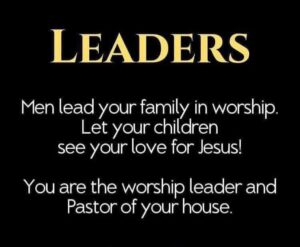NOTE: This is my first article put together from AI compilations, which I’m notating, and will always notate when doing so in the future.
– –

Someone recently said the early Christians didn’t sing songs during church services, which not one Bible verse says. This is my response.
My Testimony:
As a senior in Lutheran high school in 1974, I realized I didn’t have the ability to love people. So I decided I’d search every religion until I found the source of being able to love others. Thankfully, I started by digging deeper into Christianity, reading what the New Testament really says. It turned out that Acts was a GREAT place to start — probably is for others too.
I found what I was looking for when I read Paul and Silas’ account of worshiping God in song while in chains in prison after being stripped and severely beaten for simply preaching the gospel. Acts 16:

22 The crowd joined in the attack against Paul and Silas, and the magistrates ordered them to be stripped and beaten with rods. 23 After they had been severely flogged, they were thrown into prison, and the jailer was commanded to guard them carefully. 24 When he received these orders, he put them in the inner cell and fastened their feet in the stocks.
25 About midnight Paul and Silas were praying and singing hymns to God, and the other prisoners were listening to them. 26 Suddenly there was such a violent earthquake that the foundations of the prison were shaken. At once all the prison doors flew open….
34 The jailer brought them into his house and set a meal before them; he was filled with joy because he had come to believe in God—he and his whole household.
Christian men need to worship in Spirit and in truth!
“Draw near to God and he will draw near to you.” – James 4:8
“The joy of the Lord is your strength!” – Neh. 8:10
– –
From Google Gemini
Both biblical and extra-biblical evidence strongly indicate that early Christians sang songs to God during their services. This practice was deeply rooted in their Jewish heritage and evolved with their new faith.
Biblical Evidence:
The New Testament provides several direct and indirect references to singing in early Christian gatherings:
- Matthew 26:30 and Mark 14:26: After the Last Supper, Jesus and his disciples “sang a hymn” before going to the Mount of Olives. This is widely believed to have been part of the Hallel psalms (Psalms 113-118), which were traditionally sung at Passover. This shows that communal singing was a practice Jesus himself engaged in and likely passed on to his followers.
- Acts 16:25: Paul and Silas, imprisoned in Philippi, “were praying and singing hymns to God” at midnight. This demonstrates singing as an integral part of their spiritual practice, even in dire circumstances.
- 1 Corinthians 14:15, 26: Paul discusses the use of spiritual gifts in worship and states, “I will sing with the spirit, and I will also sing with the understanding.” He also mentions that “when you come together, each of you has a hymn, or a word of instruction, a revelation, a tongue or an interpretation.” This suggests active participation of the congregation in singing and bringing their own inspired songs.
- Ephesians 5:19: Paul exhorts believers to be “speaking to one another in psalms and hymns and spiritual songs, singing and making melody in your heart to the Lord.” This is a clear instruction for congregational singing, emphasizing a heart-felt expression to God.
- Colossians 3:16: Similar to Ephesians, Paul writes, “Let the word of Christ dwell in you richly, teaching and admonishing one another in all wisdom, singing psalms and hymns and spiritual songs, with thankfulness in your hearts to God.” This verse highlights the didactic and communal aspects of singing, where believers teach and encourage one another through song.
- Hebrews 2:12: Quoting Psalm 22:22, “I will declare your name to my brothers and sisters; in the assembly I will sing your praises.” This highlights the continuation of Old Testament psalms and their application to Christian worship.
- Luke’s Canticles: The Magnificat (Luke 1:46-55, Mary’s song), the Benedictus (Luke 1:68-79, Zechariah’s song), and the Nunc Dimittis (Luke 2:29-32, Simeon’s prayer) are poetic passages within the Gospel of Luke that are strongly believed to be early Christian hymns or songs that were sung.
Extra-Biblical Evidence:
Beyond the New Testament, early Christian writings and external accounts confirm the pervasive practice of singing in their worship:
- Pliny the Younger (c. 112 AD): In a letter to Emperor Trajan, Pliny describes his investigation of Christians in Bithynia. He reports that they were accustomed “to meet before dawn on a stated day and sing alternately a hymn to Christ as to a god.” This is a significant early pagan testimony confirming Christian singing of hymns to Christ.
- Tertullian (c. 160-220 AD): This early Church Father, in his work Apology, mentions that during their “agape meal,” “each is urged to come into the middle and sing to God, either from sacred scriptures or from his own invention.” This suggests both structured singing (from scriptures like Psalms) and spontaneous, Spirit-inspired songs.
- Philo of Alexandria (1st Century AD): Though Jewish, not Christian, Philo’s description of the Therapeutae, a Jewish ascetic sect, notes their practice of communal singing and antiphonal chanting. Given the Jewish roots of early Christianity, this provides a context for the musical practices that Christians would have inherited and adapted.
- Early Christian Hymn Fragments: Scholars have identified what they believe to be fragments of early Christian hymns embedded within the New Testament epistles (e.g., Philippians 2:6-11, Colossians 1:15-20, 1 Timothy 3:16). These passages often exhibit poetic structure, rhythm, and theological themes indicative of hymns.
- The Oxyrhynchus Papyrus 1786 (3rd Century AD): This papyrus contains the oldest known complete Christian hymn with musical notation. While the notation is difficult to fully decipher, its existence demonstrates that early Christians were not only singing but also attempting to record their musical expressions.
- Church Fathers: Many early Church Fathers, such as Clement of Alexandria, Origen, and Athanasius, discuss the importance of singing in worship, often contrasting Christian singing (which they generally preferred to be unaccompanied and focused on the words) with the more elaborate and instrument-heavy music of pagan worship.
In summary, the evidence from both the Bible and early extra-biblical sources paints a clear picture of early Christians as a singing community. Their worship services were characterized by the joyful expression of faith through “psalms, hymns, and spiritual songs,” reflecting their Jewish heritage while developing new, Christ-centered musical expressions.
Excerpt from Gemini deep research
Embedded Hymns and Poetic Passages
Scholars have identified several New Testament passages as early Christian hymns or fragments of hymns. These passages are often characterized by their poetic structure, distinct vocabulary, and profound theological content. Examples include:
- Philippians 2:5-11: Frequently considered the earliest extant Christian hymn, it focuses on Christ’s profound humility and subsequent exaltation.
- Colossians 1:15-20: A significant Christological hymn that emphasizes Christ’s supremacy in creation and redemption.
- John 1:1-18: The prologue to John’s Gospel, a highly poetic passage presenting Christ as the divine Logos.
- 1 Timothy 3:16: A concise creedal statement summarizing core truths about Christ’s manifestation, justification, and glory.
- Ephesians 2:14-16: Potentially an excerpt from a longer hymn, addressing Christ’s work in breaking down barriers between people.
- Hebrews 1:1-3: Formally styled language that likely reflects the kind of language used in worship, focusing on Christ’s divine nature.
- 1 Peter 3:18-22: Poetic language concerning Christ’s suffering, resurrection, and exaltation.
- Romans 11:33-36: A powerful doxology praising the unfathomable wisdom and knowledge of God.
Furthermore, passages such as the Magnificat (Luke 1:46-55) and the Benedictus (Luke 1:68-79) represent adaptations of Jewish hymn-patterns, like the berakah (blessing), infused with distinctly Christian content. This demonstrates a continuity with Old Testament forms while simultaneously expressing new Christological realities.
Purpose and Content of New Testament Songs
Early Christian hymns served a multifaceted purpose within the nascent church:
- Praise and Thanksgiving: They were a primary means of directly praising God and Christ for His redemptive actions.
- Instruction and Admonition: As seen in Colossians 3:16 and Ephesians 5:19-20, singing was a vehicle for teaching and reminding believers of biblical truths, thereby guiding their behavior. Songs were instrumental in reinforcing preached messages and aiding the retention of theological information.
- Confession of Faith: Hymns articulated core Christological doctrines, such as the confession of Jesus as Lord in Philippians 2:5-11.
- Communal Identity Formation: Singing united believers, shaping their collective understanding of themselves as followers of Jesus in a world that often viewed their faith with suspicion or hostility.
- Spiritual Encouragement: Hymns provided comfort and joy, particularly in times of affliction, as exemplified by James 5:13 and Acts 16:25.
The content of these early Christian songs was profoundly Christ-centered, focusing on the pivotal events of Jesus’ life, death, resurrection, and exaltation.
Psalm 150
1 Praise the Lord.
Praise God in his sanctuary;
praise him in his mighty heavens.
2 Praise him for his acts of power;
praise him for his surpassing greatness.
3 Praise him with the sounding of the trumpet,
praise him with the harp and lyre,
4 praise him with timbrel and dancing,
praise him with the strings and pipe,
5 praise him with the clash of cymbals,
praise him with resounding cymbals.
6 Let everything that has breath praise the Lord.
Praise the Lord.

Leave a Reply